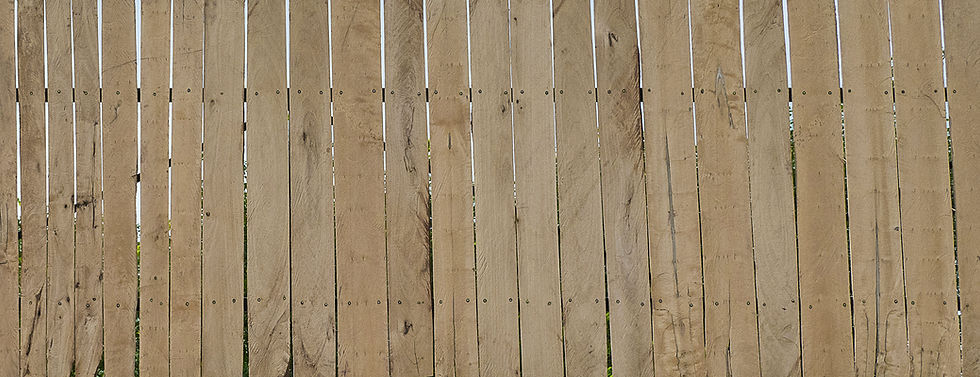Fencing Ideas: Choosing the Right Style, Material, and Design for Your Property
- Jim Smith
- Mar 25
- 3 min read
A fence is more than just a boundary—it’s a statement. Whether you’re boosting curb appeal, enhancing privacy, or keeping pets and kids safe, the right fence can transform your property. But with so many materials, styles, and regulations to consider, where do you start? This guide breaks down everything you need to know about fencing, from classic wood pickets to modern metal designs.

Why Invest in a Fence?
Fences serve multiple purposes, depending on your needs:
Privacy: Block sightlines from neighbors or busy streets.
Security: Deter intruders and keep children/pets safely contained.
Aesthetics: Frame gardens, pools, or patios with stylish designs.
Property Value: A well-built fence can increase resale value by up to 10%.
Top Fencing Materials Compared
1. Wood
Pros: Natural look, customizable (paint/stain), affordable.
Cons: Requires regular maintenance (sealing, repainting), prone to rot/insects.
Best For: Traditional homes, rustic gardens, or budget-friendly projects.
Cost: 15–15–30 per linear foot (installed).

2. Vinyl (PVC)
Pros: Low maintenance, weather-resistant, mimics wood grain.
Cons: Higher upfront cost, limited color options.
Best For: Modern homes, rainy climates, or allergy sufferers (no splinters).
Cost: 25–25–40 per linear foot.

3. Aluminum
Pros: Lightweight, rust-proof, sleek appearance.
Cons: Less privacy (often designed as ornamental fencing).
Best For: Decorative front yards, pool enclosures, or coastal areas.
Cost: 20–20–35 per linear foot.

4. Chain-Link
Pros: Affordable, durable, low maintenance.
Cons: Industrial look, minimal privacy.
Best For: Securing large properties, dog runs, or temporary boundaries.
Cost: 10–10–20 per linear foot.

5. Composite
Pros: Eco-friendly (made from recycled materials), resists rot/insects.
Cons: Expensive, limited style options.
Best For: Eco-conscious homeowners, high-moisture areas.
Cost: 30–30–45 per linear foot.

6. Wrought Iron
Pros: Timeless elegance, extremely durable.
Cons: High cost, requires anti-rust treatments.
Best For: Historic homes, grand entrances, or security-focused properties.
Cost: 25–25–50+ per linear foot.

Popular Fencing Styles
Privacy Fences: Tall panels (6–8 ft) with no gaps (e.g., solid wood, vinyl).
Picket Fences: Classic short designs (3–4 ft) for curb appeal (ideal for front yards).
Split Rail: Rustic, open design for large rural properties.
Horizontal Slat: Modern, sleek lines (often using metal or composite).
Lattice: Decorative top accents for climbing plants or partial privacy.
Climate Considerations
Cold Climates (e.g., Alberta): Choose frost-resistant materials like vinyl or powder-coated metal.
Humid Regions: Avoid untreated wood; opt for aluminum or composite.
Windy Areas: Install sturdy posts (concrete footings) and avoid solid panels that act as sails.
Installation Tips
Check Local Codes: Height restrictions, permits, and property line rules vary by region.
DIY vs. Pro: Simple designs (chain-link, prefab panels) can be DIY; complex builds (wrought iron, custom designs) need professionals.
Post Depth: Bury posts 1/3 of their height (e.g., a 6-ft post needs a 2-ft hole).
Maintenance Guide
Wood: Stain/seal every 2–3 years; inspect for rot.
Vinyl: Wash annually with soapy water.
Metal: Check for rust spots; touch up with rust-resistant paint.
Unique Fencing Ideas
Living Fences: Hedges, bamboo, or ivy-covered trellises for a green barrier.
Mixed Materials: Combine wood and metal for industrial-chic appeal.
Lighting: Add solar post caps or string lights for nighttime ambiance.
FAQs
Q: How tall should a fence be for privacy?
A: 6–8 feet tall with minimal gaps between panels.
Q: Can I install a fence on a slope?
A: Yes! Use stepped or racked panels to follow the terrain.
Q: What’s the most durable fencing for dogs?
A: Vinyl or metal with no gaps (to prevent digging escapes).
Final Thoughts
Your fence should reflect your lifestyle, climate, and design preferences. Whether you’re drawn to the warmth of wood, the sleekness of aluminum, or the low-maintenance appeal of vinyl, prioritize materials that balance function and aesthetics. Need inspiration?
Give us a call for professional consultation. 825-777-0528

%20trans%20orange_edited.png)


Comments